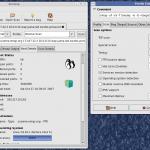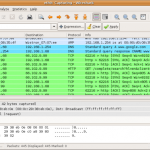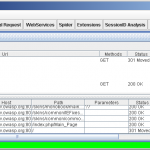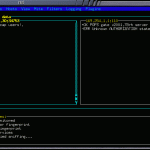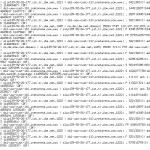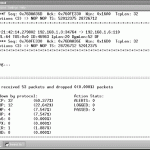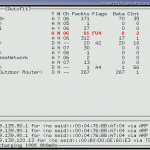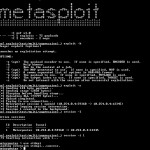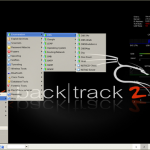Here’s a quick list of some of the better tools available for doing network/host penetration testing. Most of these tools require a Linux-based OS, some have a Windows version.
These programs range from basic utilities, to entire frameworks and live CDs.
General penetration testing tools
NMap
Nmap (“Network Mapper”) is a free and open source (license) utility for network exploration or security auditing. Nmap uses raw IP packets in novel ways to determine what hosts are available on the network, what services (application name and version) those hosts are offering, what operating systems (and OS versions) they are running, what type of packet filters/firewalls are in use, and dozens of other characteristics.
Netcat (nc)
Netcat is a featured networking utility which reads and writes data across network connections, using the TCP/IP protocol.It is designed to be a reliable “back-end” tool that can be used directly or easily driven by other programs and scripts.
At the same time, it is a feature-rich network debugging and exploration tool, since it can create almost any kind of connection you would need and has several interesting built-in capabilities.Netcat was voted the second most useful network security tool in a 2000 poll conducted by insecure.org on the nmap users mailing list. In 2003, it gained fourth place, a position it also held in the 2006 poll.
Nessus
The Nessus vulnerability scanner, is the world-leader in active scanners, featuring high speed discovery, configuration auditing, asset profiling, sensitive data discovery and vulnerability analysis of your security posture. Nessus scanners can be distributed throughout an entire enterprise, inside DMZs, and across physically separate networks.
Wireshark
Wireshark is a free packet sniffer computer application. It is used for network troubleshooting, analysis, software and communications protocol development, and education. In June 2006 the project was renamed from Ethereal due to trademark issues.
The functionality Wireshark provides is very similar to tcpdump, but it has a graphical front-end, and many more information sorting and filtering options. It allows the user to see all traffic being passed over the network (usually an Ethernet network but support is being added for others) by putting the network interface into promiscuous mode.
Curl
Curl is a command line tool for transferring files with URL syntax, supporting FTP, FTPS, HTTP, HTTPS, SCP, SFTP, TFTP, TELNET, DICT, LDAP, LDAPS and FILE. curl supports SSL certificates, HTTP POST, HTTP PUT, FTP uploading, HTTP form based upload, proxies, cookies, user+password authentication (Basic, Digest, NTLM, Negotiate, kerberos…), file transfer resume, proxy tunneling and a busload of other useful tricks.
WebScarab is a framework for analysing applications that communicate using the HTTP and HTTPS protocols. It is written in Java, and is thus portable to many platforms. WebScarab has several modes of operation, implemented by a number of plugins.
In its most common usage, WebScarab operates as an intercepting proxy, allowing the operator to review and modify requests created by the browser before they are sent to the server, and to review and modify responses returned from the server before they are received by the browser. WebScarab is able to intercept both HTTP and HTTPS communication. The operator can also review the conversations (requests and responses) that have passed through WebScarab.
HPing
Hping is a command-line oriented TCP/IP packet assembler/analyzer. The interface is inspired to the ping(8) unix command, but hping isn’t only able to send ICMP echo requests. It supports TCP, UDP, ICMP and RAW-IP protocols, has a traceroute mode, the ability to send files between a covered channel, and many other features.
Nikto
Nikto is an Open Source (GPL) web server scanner which performs comprehensive tests against web servers for multiple items, including over 3500 potentially dangerous files/CGIs, versions on over 900 servers, and version specific problems on over 250 servers. Scan items and plugins are frequently updated and can be automatically updated (if desired).
Nikto is not designed as an overly stealthy tool. It will test a web server in the shortest timespan possible, and it’s fairly obvious in log files. However, there is support for LibWhisker’s anti-IDS methods in case you want to give it a try (or test your IDS system).
Ettercap
Ettercap is a suite for man in the middle attacks on LAN. It features sniffing of live connections, content filtering on the fly and many other interesting tricks.
It supports active and passive dissection of many protocols (even ciphered ones) and includes many feature for network and host analysis.
TCPDump
tcpdump is a common packet sniffer that runs under the command line. It allows the user to intercept and display TCP/IP and other packets being transmitted or received over a network to which the computer is attached.
Tcpdump is frequently used to debug applications that generate or receive network traffic. It can also be used for debugging the network setup itself, by determining whether all necessary routing is occurring properly, allowing the user to further isolate the source of a problem.
It is also possible to use tcpdump for the specific purpose of intercepting and displaying the communications of another user or computer. A user with the necessary privileges on a system acting as a router or gateway through which unencrypted traffic such as TELNET or HTTP passes can use tcpdump to view login IDs, passwords, the URLs and content of websites being viewed, or any other unencrypted information.
Snort
SNORT is an open source network intrusion prevention and detection system utilizing a rule-driven language, which combines the benefits of signature, protocol and anomaly based inspection methods. With millions of downloads to date, Snort is the most widely deployed intrusion detection and prevention technology worldwide and has become the de facto standard for the industry.
WiFi Specific
Aircrack-ng
Aircrack-ng is an 802.11 WEP and WPA-PSK keys cracking program that can recover keys once enough data packets have been captured. It implements the standard FMS attack along with some optimizations like KoreK attacks, as well as the all-new PTW attack, thus making the attack much faster compared to other WEP cracking tools. In fact, Aircrack-ng is a set of tools for auditing wireless networks.
Kismet
Kismet is an 802.11 layer2 wireless network detector, sniffer, and intrusion detection system. Kismet will work with any wireless card which supports raw monitoring (rfmon) mode, and can sniff 802.11b, 802.11a, and 802.11g traffic.Kismet identifies networks by passively collecting packets and detecting standard named networks, detecting (and given time, decloaking) hidden networks, and infering the presence of nonbeaconing networks via data traffic.
Frameworks
These frameworks act as a collection of security holes/vulnerabilities all rolled into one package.
Metasploit
The Metasploit Framework is a development platform for creating security tools and exploits. The framework is used by network security professionals to perform penetration tests, system administrators to verify patch installations, product vendors to perform regression testing, and security researchers world-wide. The framework is written in the Ruby programming language and includes components written in C and assembler.
The framework consists of tools, libraries, modules, and user interfaces. The basic function of the framework is a module launcher, allowing the user to configure an exploit module and launch it at a target system. If the exploit succeeds, the payload is executed on the target and the user is provided with a shell to interact with the payload.
Live CDs
BackTrack
BackTrack is the most Top rated linux live distribution focused on penetration testing. With no installation whatsoever, the analysis platform is started directly from the CD-Rom and is fully accessible within minutes.
Currently BackTrack consists of more than 300 different up-to-date tools which are logically structured according to the work flow of security professionals. This structure allows even newcomers to find the related tools to a certain task to be accomplished. New technologies and testing techniques are merged into BackTrack as soon as possible to keep it up-to-date.
In the end …
Obviously, this list is far from complete – as new software is created on a daily basis, and new vulnerabilities are found every minute. If something’s missing here, feel free to add it in the comments!
